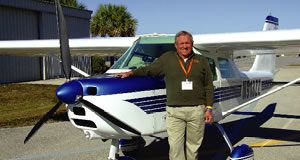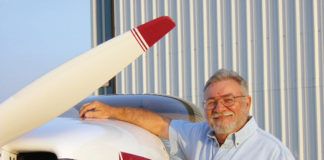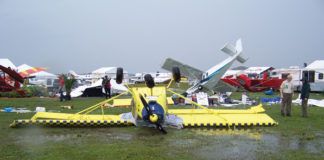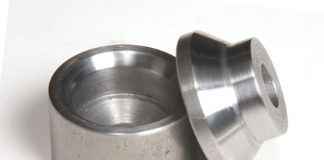Fate made an appearance at Sun n Fun this year. Not at the airshow. At the rental-car counter. Normally, I order the cheapest, nastiest car on the list, expecting that few major-market rental agencies keep these bottom feeders around. The result is usually an almost-bottom-feeder transportation module for less. Accounting likes that, so I like that.
This year the car wasn’t some sloppy convertible (were talking Florida here) or other forgettable collection of wheels and a radio. It was a shiny new Toyota Prius. Interesting. Was there a cosmic linkup acknowledging that Id signed up for the CAFE Foundations Electric Aircraft Symposium for the weekend after SnF?
In the interest of full disclosure, you should know that as an avid motorcyclist who often commutes on the Los Angeles freeways on two wheels, for me the Prius symbolizes not fuel efficiency or high technology but mobile sanctimony. Its drivers seem to revel in choking the carpool lane at 10-mph under the limit, oozing away from stoplights like every kilowatt is precious. I know you’re doing your part to save the planet, but could you do it in front of someone else? Besides, my 375-pound, 130-horsepower Suzuki gets better highway mileage…
In the same way you might resist joining an unsavory group for fear of becoming a member, Ive tried to keep my Prius exposure to a bare minimum. And I will say this: From what Ive read in the enthusiast auto press, the current-generation Prius is less weirdo-human-movement-module and more like a real, you know, car, than its progenitors. They were right, and I admit that I liked the thing, intrigued by the way the electric motor and gasoline engine interacted. In this example, you can clearly see how an electric motors instant torque is just the thing for city driving-providing surprising off-the-line acceleration to what would otherwise be a wheezy four-cylinder econobox. After a week of driving this little wedge around, I have redirected my disdain of the Prius to simply a disdain of its drivers. Wasn’t that easy?

On the track, the KillaCycle accelerates to 60 mph in less than a second thanks to a pair of 87-pound electric motors with a total of 500 horsepower. Eva Hakansson (right) provided an interesting talk about the project at this years CAFE Foundation Electric Aircraft Symposium.
And then there’s the KillaCycle-boy, wouldn’t I love to commute on that! Eva Hakansson, half of the husband-and-wife development effort on this drag-racing motorcycle, gave a lively presentation at the Electric Aircraft Symposium. The KillaCycle employs two electric motors that combine for 500 hp and a 200-pound block of lithium-ion-phosphate batteries. This collection of 1210 A123 battery cells is grouped into a 1x1x2-foot block, producing a nominal 374 volts with a 9.1-kilowatt/hour capacity; ideally, these batteries are heated to 110 C for maximum efficiency.
This 653-pound beast has turned a quarter-mile in 7.82 seconds at 174 mph. The claimed 0-60 time is less than a second, which is nearly 3 G of acceleration. The Prius? Zero to 60 in about 10 seconds. G forces? Not enough to put whitecaps on your double-shot mochaccino.
No question that the KillaCycle is an outlier, but Toyotas development of the Prius, and the sudden inrush of effort by other manufacturers to catch it, will provide the underpinnings for electric aircraft. Battery technology is, right now, the big holdup. You can have small, light batteries, but they are very expensive and are finicky beyond reason. More durable batteries have comparatively low power densities; larding a car up with 500 pounds of battery is bad enough, but doing that to a two-seat aircraft is almost criminal. These are problems for the carmakers, too, so well benefit from their advances.
In the quest for efficiency, aircraft built specifically for electric propulsion will be much like modern motorgliders-thin, long wings coupled to tight-fitting fuselages. They will be designed to take advantage of the electric motors tiny footprint, in the same way that aircraft design moved away from big, open-front radial designs to sleeker inline-cylinder and even opposed-cylinder configurations. Further drag reductions will come from cowlings that minimize cooling losses; though electric motors still need to be cooled, and there are both air- and liquid-cooled types in use, the need to shed heat is greatly reduced compared with gas-engine installations.
Gone will be the days that we fly at maximum-continuous power in cruise. Most of the proposals today envision an aircraft with, say, a 24-kilowatt motor, using full power for takeoff only and reducing to half that for cruise. Maximum range comes at lower airspeeds and higher altitudes, one place the electric motor shines. Continue to provide the same current, and the electric motor puts out the same amount of torque, pretty much regardless of altitude. This will, in effect, turbocharge electric-aircraft performance, and suggest high-altitude, low-indicated-airspeed cruise for best efficiency. Other technologies will present themselves. Today, hybrids are not quite efficient enough to do the job-you lose a bit in every energy transfer-and its hard to overcome the inherent potency of gasoline. But the hybrid/electric technology is advancing rapidly.
Real Airplanes Today
After looking a bit more closely at the low-cost segment of the kit market last month, it struck me that we at KITPLANES have not done as much as we could to highlight some very nice designs. Starting this issue, well select a specific low-cost design for acknowledgement-see the Fisher Flying Products column on Page 7. Thats just the start. We had our flight-test editor Ed Wischmeyer fly three affordable designs at Sun n Fun-the Breese, the CGS Hawk and the Drifter-so look for full reports on these designs in the next few issues.

![]()
Marc Cook has been in aviation journalism for 22 years and in magazine work for more than 25. He is a 4200-hour instrument-rated, multi-engine pilot with experience in nearly 150 types. Hes completed two kit aircraft, an Aero Designs Pulsar XP and a Glastar Sportsman 2+2.




